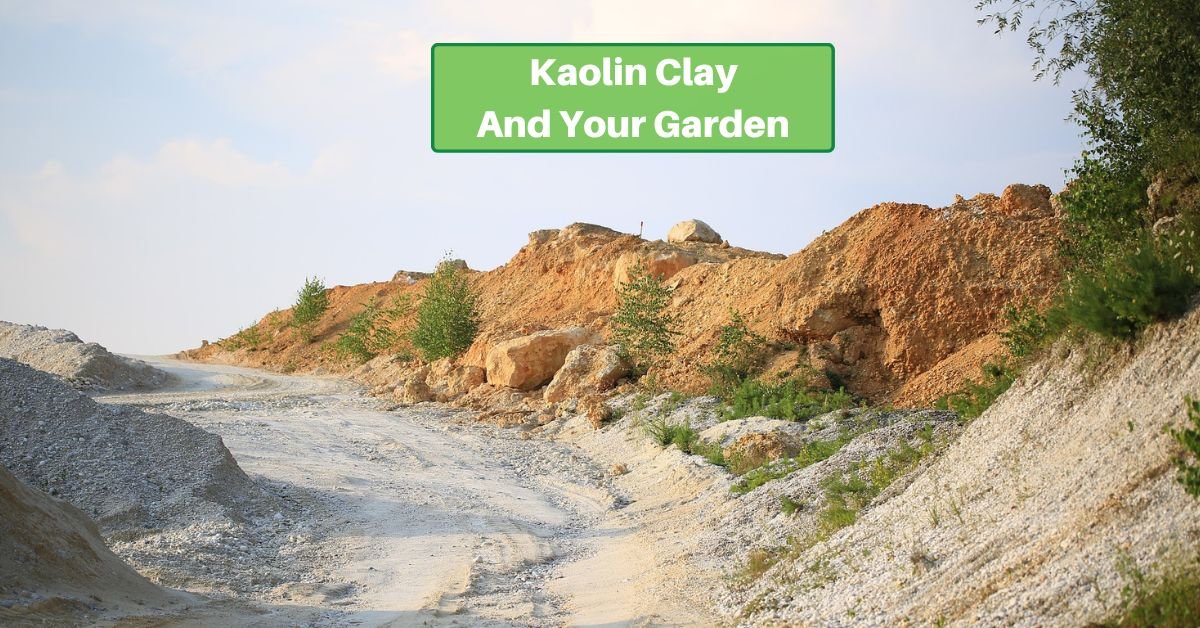Kaolin clay, a naturally occurring mineral, can be a blessing for gardeners. Known for its unique fine texture and white color, it’s more than just a component of ceramics or a face mask ingredient. In the realm of gardening, it’s a game-changer. Let’s look at its multifaceted role in helping your plants prosper.
Kaolin Clay in Gardening: An Overview
Kaolin clay is an essential tool in maintaining the health and beauty of gardens. It enhances plant growth and fortifies soil quality, making it a valuable asset in ornamental and vegetable gardens. The effectiveness of kaolin clay improves plant vigor. It creates an environment that supports various types of gardens, from backyard plots to larger agricultural fields.
Benefits for Plants and Soil
The magic of kaolin clay lies in its ability to improve soil structure. It increases the soil’s ability to hold water and nutrients, ensuring plants get a steady supply of what they need to thrive. This benefit is especially crucial in sandy soils, which struggle with water retention, and clay soils, which often hold too much water.
Ideal Garden Situations
Kaolin clay is beneficial in gardens prone to environmental stressors such as drought, heat, or poor soil conditions. In vegetable gardens, it can help produce healthier, more robust plants, leading to higher yields of fruits and vegetables.
If you’d like to try it in your garden, you can find it online through Amazon, or at most garden centers.
Pest Control and Disease Prevention
One of the standout features of kaolin clay is its ability to protect plants from pests and diseases. Applied as a spray, it forms a protective barrier that deters pests like aphids and beetles.
This protective layer prevents pests from reaching the plant’s surface, effectively reducing infestations without harsh chemicals. The barrier also shields plants from the direct sun, reducing the risk of sunburn on tender plant tissue.
Kaolin clay is also effective in preventing certain fungal diseases. It creates an environment less conducive to the growth of fungi that cause common plant diseases.
Case Studies
Numerous studies have demonstrated the efficacy of kaolin clay in gardening. For instance, a study conducted by Fumiomi Takeda, D. Michael Glenn, and Thomas Tworkoski, published in the journal ‘HortScience’ in 2005, showed a significant reduction in pest damage in apple orchards treated with kaolin clay. This study underscores kaolin clay’s practical benefits and effectiveness in real-world settings.
Improving Soil Quality with Kaolin Clay
Kaolin clay’s role in soil amendment is also significant. It can alter soil properties to create a more hospitable environment for plant growth.
It can help balance the soil’s pH level, making it more neutral. This mainly benefits plants that do not thrive in highly acidic or alkaline soils. It also improves soil texture, making it more porous and improving air and water movement.
Kaolin clay also enhances the soil’s ability to retain nutrients, which are then slowly released for uptake by plants. This slow release is crucial for sustained plant growth and health.
The application of kaolin clay varies depending on soil type. In sandy soils, it helps in water retention. In contrast, in clay soils, it aids in breaking down the compactness, improving aeration.
Application Methods and Best Practices
Applying kaolin clay in gardens is a straightforward process but requires some know-how for optimal results.
It’s typically applied in a diluted form as a spray. Mix it thoroughly with water and apply it evenly over the plant leaves and stems.
The quantity and timing of application depend on the type of plants and the specific needs of the garden. Regular applications may be necessary during the growing season, especially after rain or irrigation, which can wash away the clay.
Environmental Impact and Safety
Using kaolin clay in gardening is environmentally friendly and safe. It is a natural, mineral-based product with minimal environmental impact. It does not lead to soil contamination or harm beneficial insects and wildlife.
Safety Measures
While kaolin clay is generally safe, you should observe basic safety measures during application. Wearing protective clothing and masks is advisable to avoid inhalation or contact with eyes.
Other Uses of Kaolin Clay
Beyond gardening, kaolin clay finds extensive use in various industries. It’s a crucial material in ceramics, giving pottery strength and finish. In the paper industry, it’s used as a coating material to provide paper with gloss and smoothness. The medical field also utilizes kaolin clay for its absorbent properties.
Kaolin clay is a versatile and invaluable resource in gardening. Its ability to improve soil quality, protect plants from pests and diseases, and its environmentally friendly nature make it essential for any gardener seeking to enhance their garden’s health and productivity.









